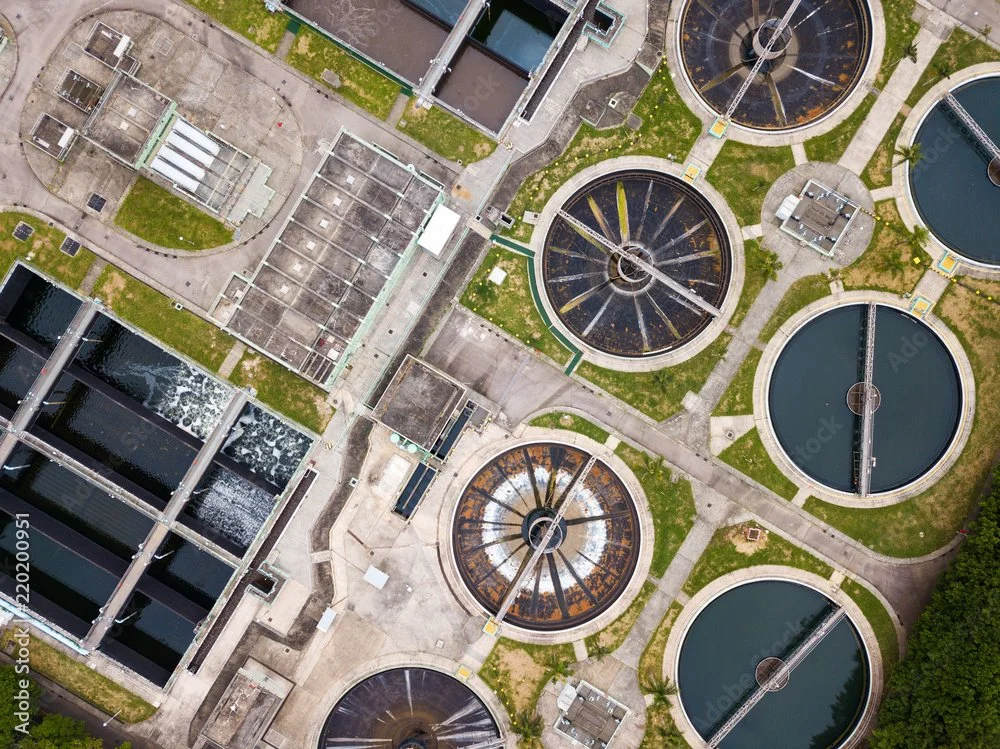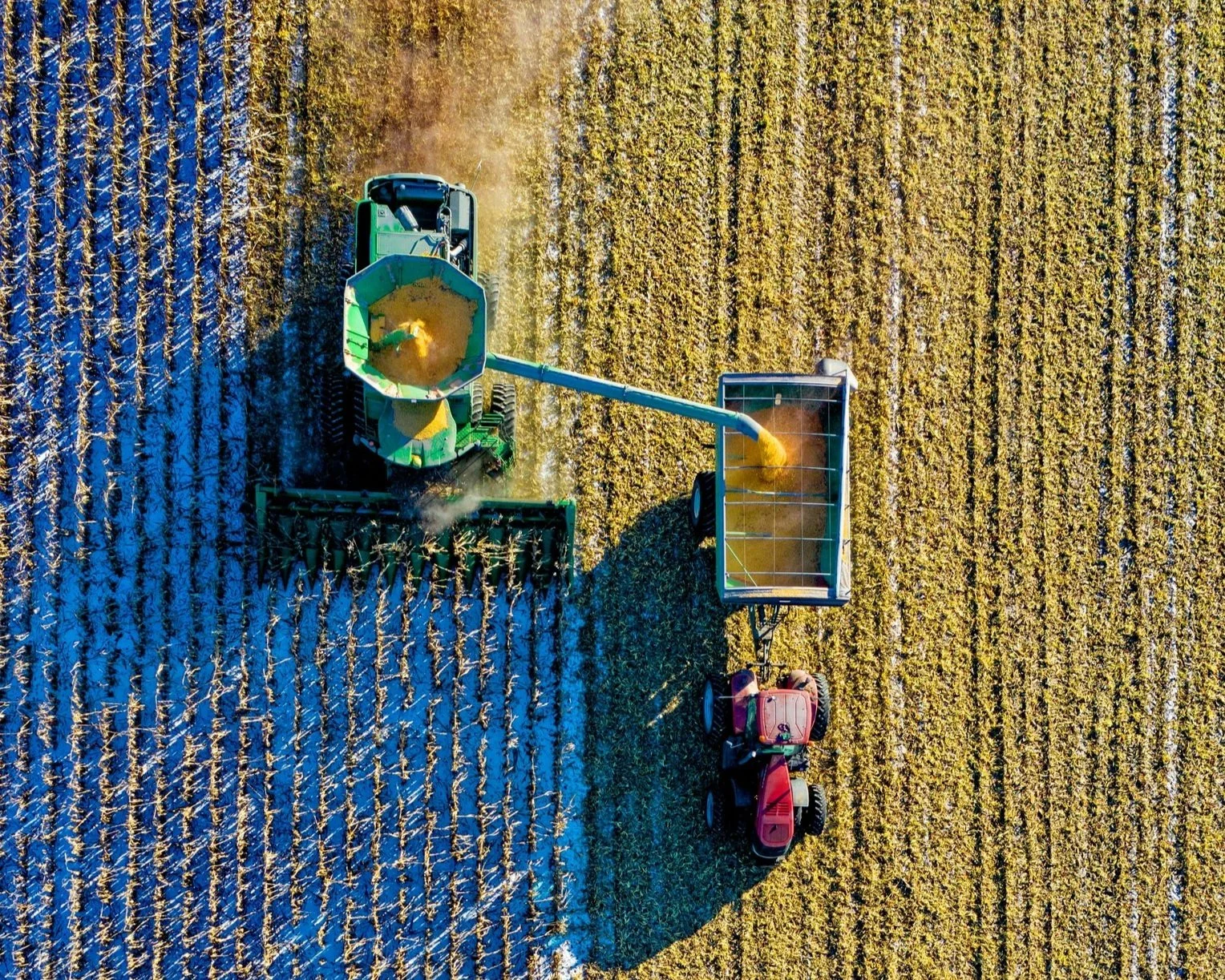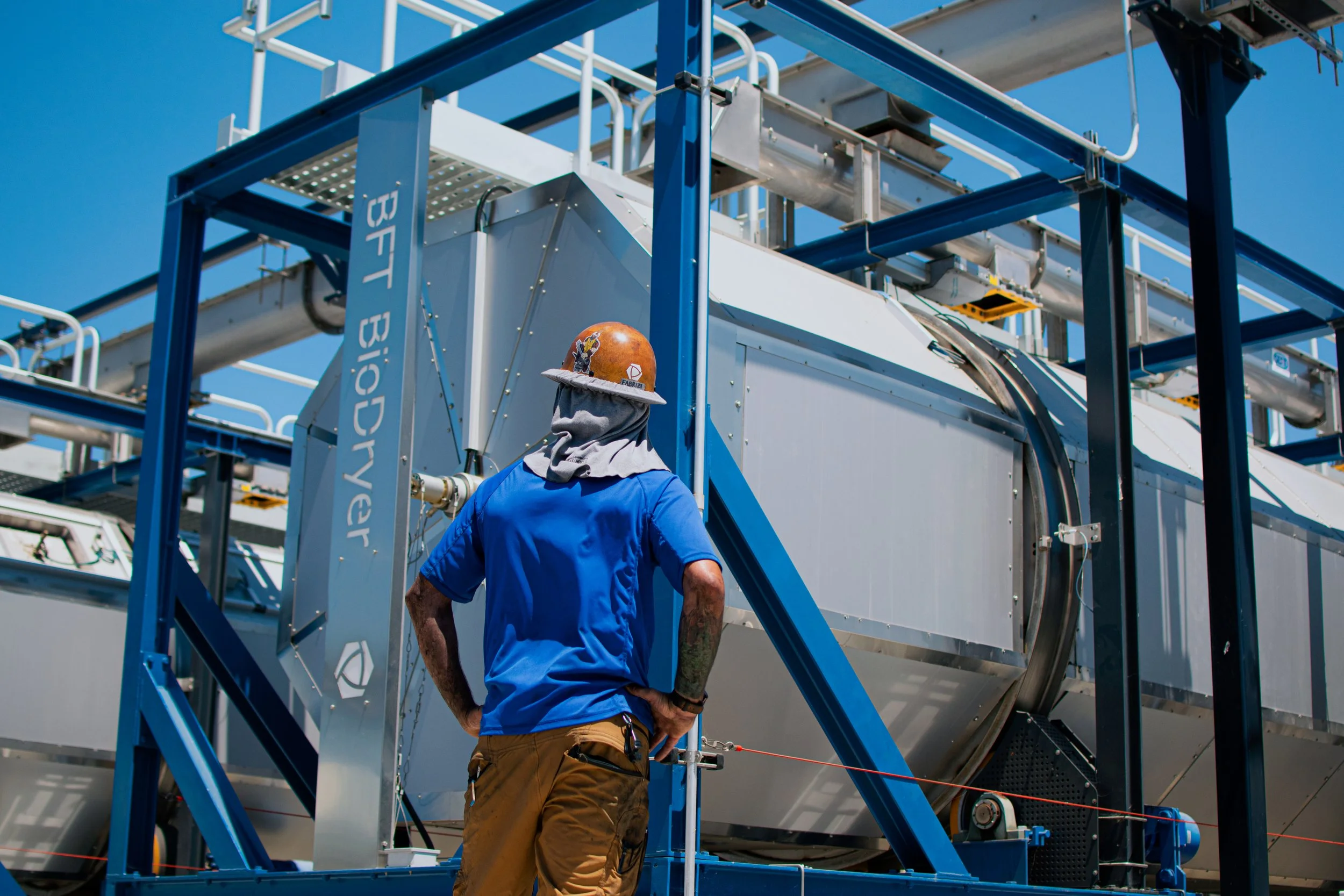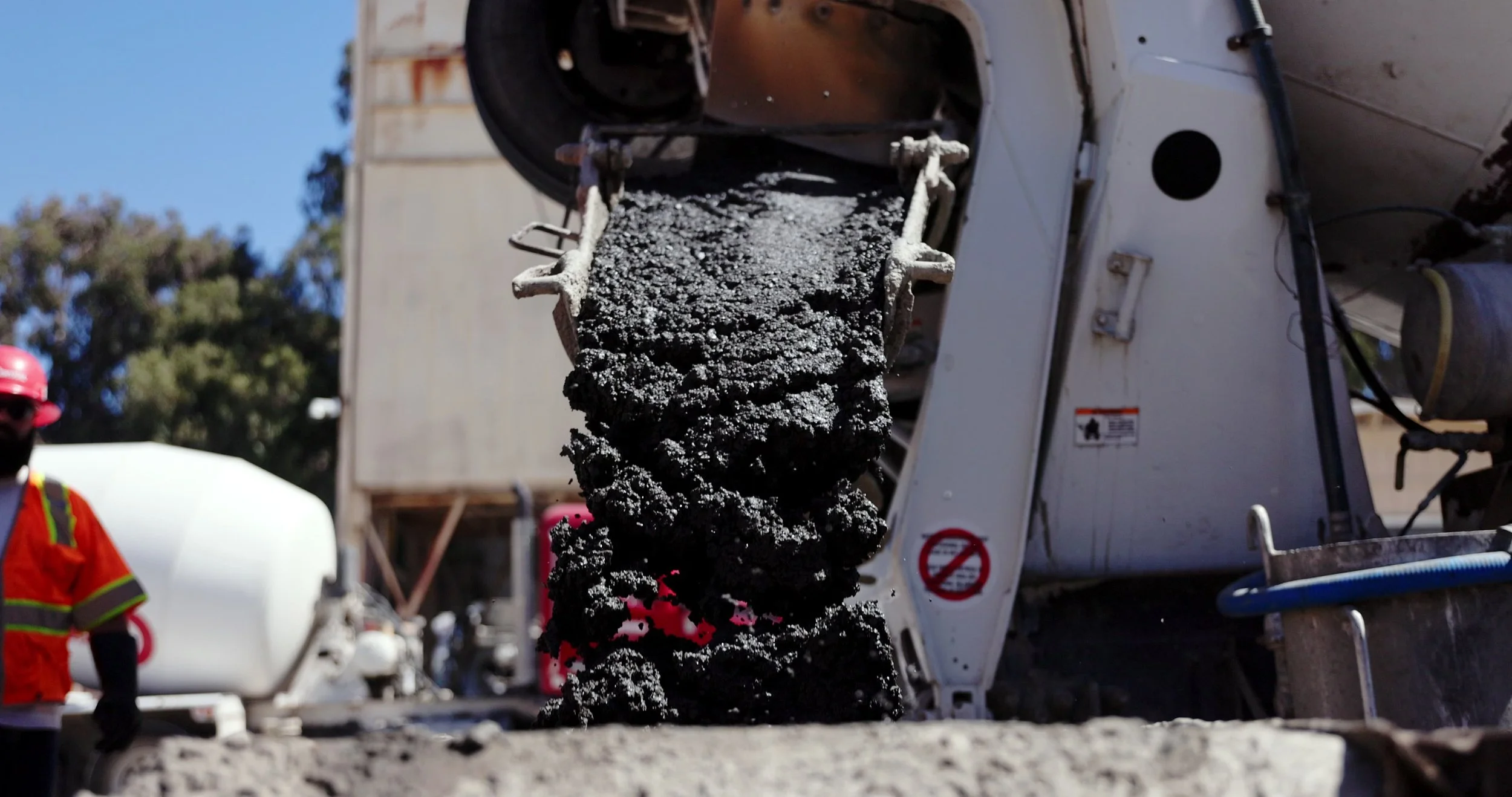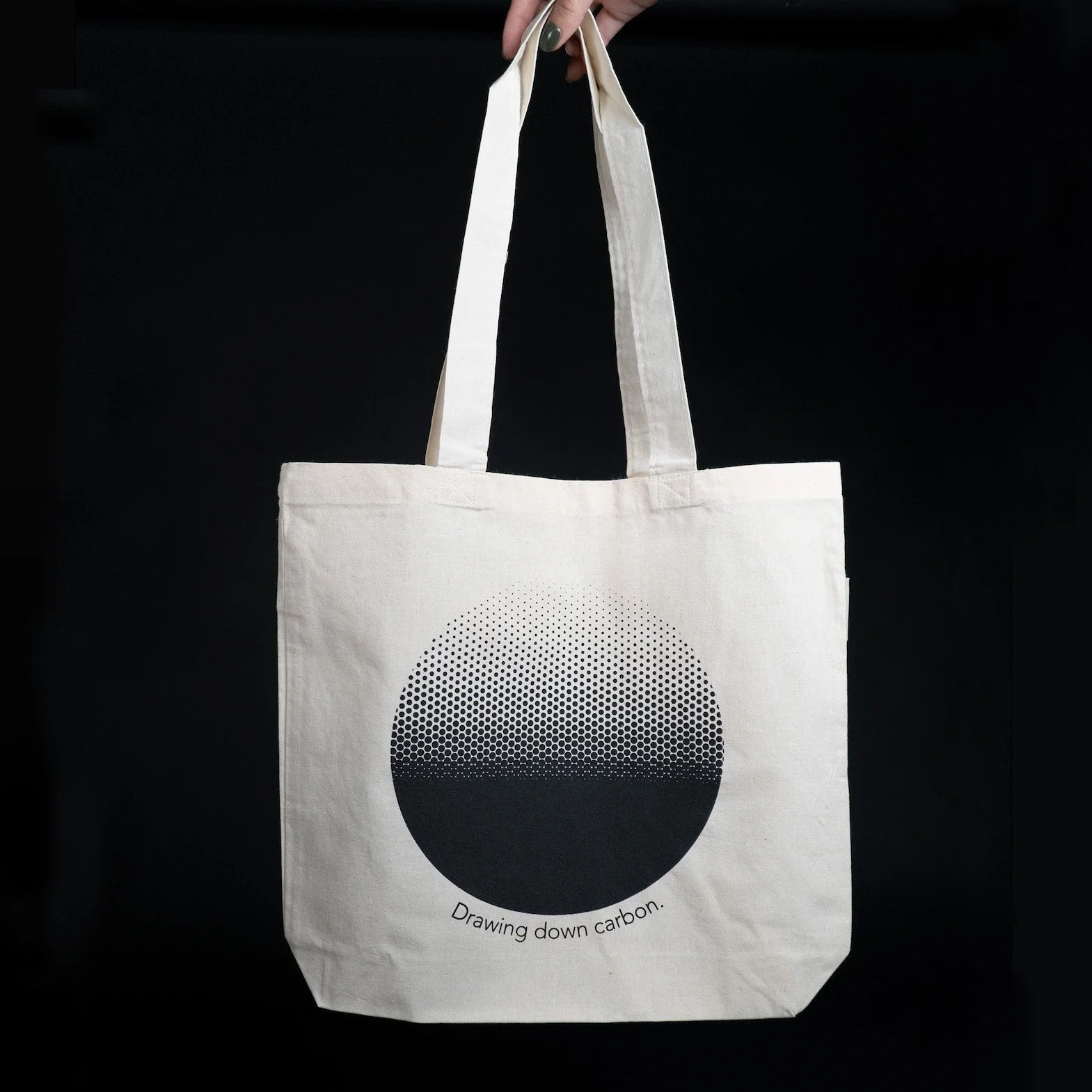Easier said, but we did it.
We’ve worked hard to ensure a positive impact is made at every step of our value chain.
Here’s a breakdown of each part…
01
Utilize Waste
We are targeting biomass sources that are causing clear harm in their current management; what we call ‘impact feedstocks.’
Our first one is biosolids.
-
Biosolids is the solid residual material created from the treatment of municipal wastewater.
Resulting at the end of a multi step process, biosolids are quite different than the raw sewage input that enters a treatment plant.
Today, the majority of biosolids either go to landfill to emit as methane…
Preventing the landfilling of biosolids can avoid up to 24 tons of CO2 per ton of OurCarbon® produced.
15%
of US methane emissions are from organics like biosolids going to landfill
…or are spread on cropland where its contaminants leach into soils and waterways.
Stopping the land application of biosolids keeps contaminants out of our food and eco systems and allows us to destroy them through our technology.
US EPA
officially gave biosolids on land a Superfund contamination designation on July 8, 2024
02
Leverage Technology
We’re born from Bioforcetech’s technology; a leading provider of biological drying and advanced pyrolysis units.
Bioforcetech is fully scaled processing biosolids in North America and Italy. They are the only full scale operational biosolids pyrolysis in both countries, and their technology has been published by the EPA to destroy/remove contaminants, including forever chemicals like PFAS from biosolids.
-
There is a lot of wet biomass out there that needs to be dried for proper handling, but evaporating water takes a lot of energy. Bioforcetech’s BioDryer uses bacterial energy from within the feedstock itself to help the material dry out without extra energy.
Think of it like a speed composting process. The bacteria flourish, creating heat, and that evaporates the water.
-
Pyrolysis is a process in which biomass is heated in a space with no added oxygen to high temperatures. During this process, a portion of the carbon in the biomass forms a gas which we use to keep the whole process going. The high heat and low oxygen is what removes contaminants, including microplastics, pharmaceuticals, and even PFAS.
The remaining carbon is fixed into the output material along with any mineral content that remains.
03
Fix Carbon
Bioforcetech’s process forces the carbon molecules found in organic materials to form strong bonds that won’t be broken in normal natural environments. This ‘fixed’ carbon content is considered to be permanantly removed from the carbon cycle.
For every ton of OurCarbon produced, over 1 ton of CO2e is removed from the atmospheric cycle.
-1.02 Tons
of CO2e are removed from the carbon cycle and fixed within every ton of OurCarbon, even after considering the inputs required to make it.
-
An Environmental Product Declaration (EPD) is a summary document reporting the results of an extensive study of a material or product's production process.
OurCarbon's EPD takes into account all of the energy, water, and inputs required to produce a given quantity of our material. It reports on carbon impact alongside various other impact factors from ecosystem effects to clean water.
04
Store Carbon
When utilized in concrete or asphalt, OurCarbon is durably stored permanently in a way that can be tracked and traced with high confidence. This value chain can help decarbonize the construction industry, an industry responsible for a large share of emissions and waste.
-
No. Producing carbon credits would separate the carbon benefit of OurCarbon® from the final material it is going into. We want the user of OurCarbon® to directly account the benefit, so we have the carbon negativity verified within our Environmental Product Declaration (EPD) that is directly accounted for within the concrete itself.
We call it ‘Insetting’ instead of offsetting!


